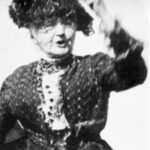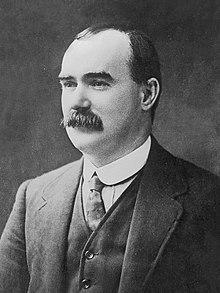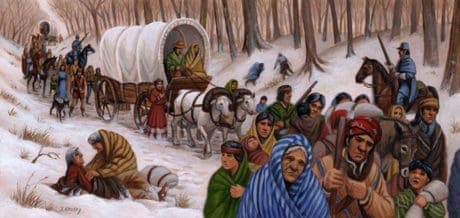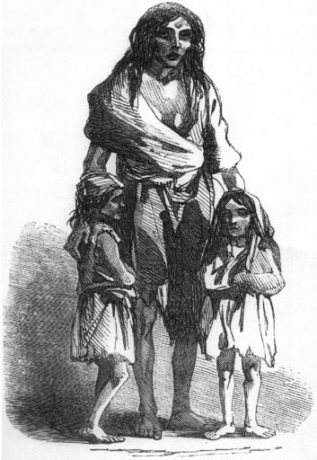
We recently received a lovely letter from a customer named Marjorie Larney, in California. She graciously agreed to let us share it with you. She wrote the following kind words, and we then discovered much more about the Irish-American lady behind the review. Here is the story of our 87 year old hero:

When I competed for the U.S. in my first Olympics in Helsinki in 1952, I was only 15, the youngest javelin thrower ever and that record still stands today. But the most wonderful part about participating in the games was the reception from the Finnish people and a very special gift to me from a Finnish Olympic champion of the past, the first great “Flying Finn.”
In Helsinki the week before the games, our track and field squad practiced every morning. Then, we would return to the Women’s Nursing College where we were housed, have lunch, and at the suggestion of our manager rest for the remainder of the afternoon. But my roommate Mabel Landry, long jumper from Chicago and I, javelin thrower from New York, just couldn’t follow our manager’s advice. We had too much energy, and we wanted to see the sights. It was our first time ever in a foreign country. So, we asked a nursing student to write the name and address of the nursing college on a piece of paper. After we practiced saying the name aloud and secured the paper in a safe pocket, we slipped out a side door, hopped a trolley and headed downtown.
That whole week, Mabel and I had a great time exploring the Finnish capital. Yes, we were lost once or twice, but always an English-speaking Finn would turn up to steer us in the right direction. We were dressed in our navy blue jackets with the U.S. Olympic shield on the breast pocket, and everywhere people stared and eventually smiled at us. Most Finns were towheaded blonds and I with my dark curly hair and Mabel with her honey-brown complexion were an unusual sight for their eyes.
One day, while strolling down a street of small shops, we came upon a sporting goods store. In the store’s front window, javelins and other track and field equipment were prominently displayed. No sporting goods store back home had javelins in the window. I had to go in and see those javelins for myself.
The javelins were all sizes—women’s, men’s, and even a children’s size, and they were a dazzling creamy white birch, not dull grey metal like what I threw in New York. As I began to pick out a women’s spear from the rack, an elderly, bald, chunky man came to help me. He selected a women’s javelin that was birch, inlaid with four strips of a darker wood. He handed it to me and said, “Very special.” The javelin was perfectly balanced, and its soft blue and white corded grip felt wonderful in my hand. The salesman smiled when he saw I held the javelin with the middle finger resting alongside the cord – the Finnish Grip. Then I stretched my arm back and walked through my five-step throwing position, and his smile widened, because I used the Finnish Front Cross Step. Most Americans used the American Back Cross that came more naturally from throwing baseballs in from the outfield, but my coach Sgt. John P. Brennan of the New York City Police Athletic League had studied a film of Finland’s Nikkanen, the men’s javelin world record holder for fourteen years, and Coach Brennan insisted I learn the Finnish style and only the Finnish style. He had coached sixteen-year-old sprinter Mae Faggs to a berth on the 1948 Olympics. When he saw me throwing a football with the boys before practice, John Brennan switched me from the sprints to the throws. “You’ve got some arm, Marjorie, and if you do everything I tell you, you’ll be on the next Olympic team just like Mae.” Coach Brennan had a firm and gentle way about him that inspired trust, and he won mine from the first day I met him when I was eleven years old. I obeyed every instruction he gave me and never doubted that what he said would come true.
The “very special” javelin was expensive, but I wanted it more than anything, more than the Jimmy Foxx Louisville slugger I got for Christmas when I was ten, more than the Gil Hodges first baseman mitt I got for confirmation when I was eleven and even more than the NFL real pigskin football my grandpa presented to my brother and me one fall day when I was twelve. My grandpa, Patrick Henry Larney, was ahead of his time in equalitarian thinking about women’s rights. A progressive politician, he represented Brooklyn’s Irishtown in the New York State Assembly.
For my three weeks at the Olympics my parents and relatives had chipped in thirty dollars for my spending money, but I had used most of it for souvenir presents. (When my dad, Leo F. Larney, passed away in 1968, I found in his suit pocket my souvenir gift of a leather billfold embossed with a color impression of the ’52 Olympic stadium. He had used it every day for 16 years. I still have it.)
Mabel offered me the money she had with her, and we pooled it with mine, but it wasn’t enough for the “very special” javelin. It was enough, though, for another one, a plain wooden javelin, without the inlays and with only a white cord. Half the price of the beauty. I gripped the plain one and again walked through my steps. The javelin was OK, better than what I had ever used before, but my face flashed my feelings; I was really still just a kid. The salesman read my disappointment, took the ticket on the beautiful javelin and wrote a new price—the same as that of the plain one. I couldn’t believe it, what New Yorker could? The salesman said he was the owner of the store. He was beaming the whole while as he carefully wrapped the special javelin. It truly was a work of art.His giving me that “very special” javelin at half price made me feel very special, too. I sensed that this elderly Finnish man believed in me, that I was meant to have and throw the best javelin made. Before we left his store, he asked for our autographs, and we asked for his. I wondered if he was an old trackman himself, and he nodded and said “long distance” with a grin. He signed his name Hannes Kolehmainen.
In the games, I didn’t get to throw that special javelin, as no competitors could use their own implements. I did, however, use a Finnish one just like it, and I threw my personal best performance for the year. Almost ten feet better. The Finnish champion, a woman of thirty-five, befriended me and quieted my nerves in the qualifying round as I finished eighth. In the final, I placed 13th; she placed one behind. I aimed to win a medal as everyone did, but I felt content with my result. I was the youngest person, male or female, ever to compete in the Olympic javelin throw, and that record stands today. Mabel had competed well the day before. She came 7th in the long jump and jumped further than the previous Olympic record for the event.
Now, what touches me most is that the elderly Finnish man was no ordinary sporting goods storeowner. We saw him one more time. As we marched into the Olympic stadium on opening day, July 19th, it was pouring rain. I was chilled to the bone, my jacket, hat and skirt soaked clear through. We weren’t issued raincoats and stood in the downpour for two hours before we marched. The U.S. team was the next to last contingent to enter the stadium. The parade of athletes took 56 minutes; the spectators endured the steady rain for as long as we did. But let me tell you, when our flag entered the stadium the roar that went up from the crowd was like a rolling wave of thunder. It followed us around the track to our place near the tower. Seventy thousand people were on their feet cheering the U.S. team. Later, I asked why and learned that the Finns wanted to show their appreciation for what we did to defeat the Nazis and that we were now standing up to the Stalinist Soviet Union. The Russians were their century-old subjugator who defeated tiny Finland in a war from 1939 to 1944. We received the loudest ovation next to the Finnish team who entered after us. We forgot all about the rain.
One thrilling highlight was the entrance of the Olympic torch carried by the Finnish champion, 55-year-old Paavo Nurmi, winner of 5 golds in the 1924 Olympics. To the cheers of the crowd, he ran at a good clip to the tower. He touched the torch to a wide bowl on a high stanchion in the infield that immediately flamed up, and then he gave it to a Finnish teenager who ran with the torch up the steps of the tall tower to the top. The youth passed the torch to another athlete wearing the Finnish team’s singlet and shorts. When a burst of flames arose from the gigantic bowl that would stay burning until the end of the competition, there was another great roar from the crowd. The scoreboard flashed, “Fire in the tower lit by Hannes Kolehmainen.”
“Mabel, Mabel,” I shouted, “that’s the man in the javelin store!” The next day I learned that in the 1912 Olympics 22-year-old vegetarian Hannes Kolehmainen won the 5,000 and 10,000 meter races and the 12,000 meter cross-country run. He also earned a silver medal in the 12,000 meter team race. In the 1920 Olympics he won another gold in the marathon.
As for the 1952 Olympics, 62-year-old Hannes Kolehmainen helped make the rain-soaked opening day bright and memorable for the Finnish people and everyone in the stadium. As for me, I’ve never forgotten a great and modest champion’s generous gift of encouragement to a hopeful young athlete. As we marched out of the stadium the Olympic creed flashed on the scoreboard:
“The most important thing in the Olympic Games is not to win but to take part, just as the most important thing in life is not the triumph but the struggle. The essential thing is not to have conquered but to have fought well.”
Once home, the very special javelin became my “Flying Finn.” I threw it to win two National Championships and to earn spots on the ’56 Olympic team, the ’55 and ’59 Pan-American teams and the teams for the first and second U.S. versus USSR dual meets in ’58 and ’59. My throwing career culminated in being inducted in 1964 into the Helms Track and Field Hall of Fame in Los Angeles. That very special javelin really flew true.
Sadly, Grandpa didn’t see me make the Olympic team; he passed away in the spring of 1952. Then, in the spring of 1956, John Brennan had a massive heart attack and died at the age of 49. For his vision and dedication in creating the Police Athletic League’s track and field program for underprivileged youth, the City of New York constructed Brennan Field in Middle Village, New York. An Irish immigrant, Brennan arrived in New York with his widowed mother and younger sister when he was ten years old. His stellar middle-distance running career began at Newtown High School and continued at Fordham University and with the Police Sports Club. In the mid-1940s the NYC Police Athletic League and the Chicago Catholic Youth Organization women’s track and field teams were the first and only teams in the U.S. to be racially integrated.
We hope you enjoyed Marjorie’s marvelous story. It was originally published by Irish-America magazine in 2008.
















 appalling enough and if the reader finds the descriptions of people, events and their outcome hard to believe, then go to the history books and be convinced.
appalling enough and if the reader finds the descriptions of people, events and their outcome hard to believe, then go to the history books and be convinced. doomed passenger ship the Titanic, which went down in April 1912. Captain Smith was responsible for over 2,200 passengers and crew, more than 1,200 were killed that fateful night of April 14. Titanic was built to the highest standards of the day and was deemed unsinkable. The ship was built in the Harland & Wolfe shipyard in Belfast, Ireland, before setting sail to pick up its passengers in Southampton, England. “She was fine when she left here” is a standard Irish refrain which is still used in Belfast today when conversation turns to the subject of the tragic Titanic. Others say the Titanic was “built by Irishmen and sunk by an Englishman.” Captain Smith was ultimately found “not responsible” for the sinking of the Titanic on her maiden voyage, but is that completely true? There are a few reasons to call into question the qualifications and attentiveness of Captain Smith.
doomed passenger ship the Titanic, which went down in April 1912. Captain Smith was responsible for over 2,200 passengers and crew, more than 1,200 were killed that fateful night of April 14. Titanic was built to the highest standards of the day and was deemed unsinkable. The ship was built in the Harland & Wolfe shipyard in Belfast, Ireland, before setting sail to pick up its passengers in Southampton, England. “She was fine when she left here” is a standard Irish refrain which is still used in Belfast today when conversation turns to the subject of the tragic Titanic. Others say the Titanic was “built by Irishmen and sunk by an Englishman.” Captain Smith was ultimately found “not responsible” for the sinking of the Titanic on her maiden voyage, but is that completely true? There are a few reasons to call into question the qualifications and attentiveness of Captain Smith. 

